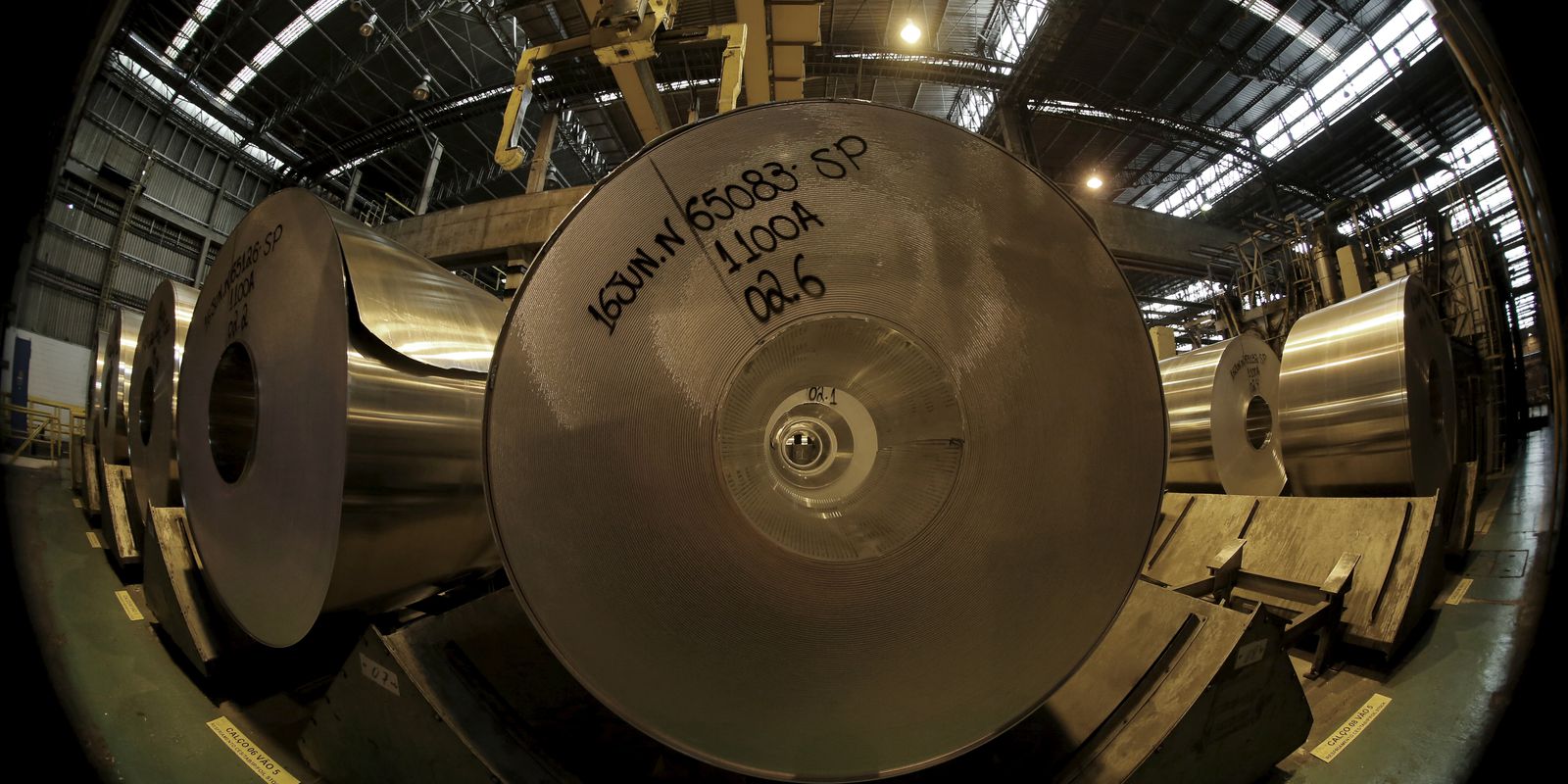In 2020, the Brazilian industry comprised 303,600 companies with one or more employed persons. These companies generated BRL 4 trillion in net sales revenue and paid a total of BRL 308.4 billion in salaries and other compensation. This result involved 7.7 million people employed in the industrial sector.
The data are from the Annual Industrial Survey Empresa 2020 (PIA Empresa), released today (21) by the Brazilian Institute of Geography and Statistics (IBGE).
According to the survey, the processing industries concentrated 92.9% of the revenues of industrial companies in 2020. The food products manufacturing segment occupied the first position in the ranking of net sales revenue, with 24.1% of the Brazilian industry’s revenue. From 2011 to 2020, this sector gained the most market share, with an increase of 5.9 percentage points, of which 3.6 percentage points were related specifically to the 2019-2020 period.
Another highlight was the manufacturing sector of motor vehicles, trailers and bodies, which, in 2011, occupied the second position in the ranking of net sales revenue in the industry and fell to fourth position in 2020, losing 4.9 percentage points of share in 10 years.
“This movement occurred in contrast to the advance of the chemical products manufacturing segment, which went from fourth to second position in 10 years, reaching 10.5% of the industry’s revenue. The third and fifth positions, kept unchanged between 2011 and 2020, were occupied respectively by the activities of manufacturing coke, petroleum products and biofuels (8.6%) and metallurgy (6.4%)”, says the report. IBGE
Labor
In 2020, Brazilian industry employed 7.7 million people, of which 97.4% were allocated to manufacturing industries. Together, the five sectors that employed the most, in 2020, concentrated 46.5% of the workforce in the industry: manufacturing of food products (23%), manufacturing of apparel and accessories (6.7%), manufacturing of of metal, except machinery and equipment (5.8%), manufacture of motor vehicles, trailers and bodies (5.7%) and manufacture of non-metallic mineral products (5.3%).
According to the IBGE, the industry reduced the workforce by about 1 million people between 2011 and 2020, with an emphasis on sectors that are likely to face more intense structural changes related, for example, to the evolution of technology, strong competition with the external sector and dependence on domestic consumption.
“Between 2011 and 2020, more than half of the loss was concentrated in the manufacturing of apparel and accessories (258.4 thousand), leather preparation and manufacturing of leather goods, travel items and footwear (138.1 thousand). thousand) and manufacturing of metal products, except machinery and equipment (134.2 thousand)”, says the survey.
Comparing 2020 with 2019, there was an increase of 35,241 employed persons (equivalent to an increase of 0.5%), with 80% of these referring to manufacturing industries. In particular, the food product manufacturing sector increased the number of employed persons by 7.4% in the period, equivalent to an increase of 121,500 employed persons.
Pandemic
“It is worth noting that in 2020, at the beginning of the health emergency due to the new coronavirus pandemic, federal, state and municipal decrees established that the industrial sector would enter the list of essential activities. However, the degree of resilience among industrial segments depends fundamentally on the demand for industrial goods and services produced, on the need for imported raw materials and even on the installed capacity that makes it possible to adapt production lines in the face of unanticipated demand movements. Thus, some activities may have faced greater difficulty in the flow of goods, while others had to establish extra work shifts to handle orders and fulfill contracts”, analyzes the IBGE.
Remuneration
The average remuneration in the industry was 3 monthly minimum wages. In general, extractive industries (4.6 minimum wages) paid a higher average wage than manufacturing industries (2.9 minimum wages). According to the survey, this result was mainly influenced by the high remuneration in the oil and natural gas extraction sector, whose monthly salary, on average, reached 22.7 minimum wages in 2020.
From 2019 to 2020, there was a reduction of 0.2 minimum wages in the industry. All activities maintained the same level or had a salary reduction in this period, with the exception of activities to support the extraction of minerals (which showed an increase of 0.6 minimum wages) and the manufacture of coke, petroleum products and biofuels (increased of 1 minimum wage).
“The reduction/maintenance of remuneration may have been softened by the Emergency Employment and Income Maintenance Program, created by Provisional Measure n. 936, of 04.01.2020 and converted into Law no. 14,020, of 07.06.2020, with the aim of mitigating the economic effects of the covid-19 pandemic on companies and workers. In this way, even in activities that had a salary reduction, the worker’s income may have been complemented with the resources of the Emergency Employment and Income Preservation Benefit – BEm, as provided for in the program “, informed the IBGE.
PIA Product
The IBGE also released the 2020 Annual Industrial Research Product (PIA Product) which analyzed, in 2020, about 3,400 industrial products and services in the 31,700 companies with 30 or more employed people and their 38,100 local units. industrial.
In the ranking of the ten main industrial products, iron ore, with revenue of R$ 145.7 billion and a share of 4.8% in the total, influenced by the increase of more than 70% in the price of a ton of ore in 2020, supported by the Chinese demand, surpassed crude oil, the second in the ranking, with net revenue of R$ 95.5 billion and a share of 3.1% in the total, whose price per barrel of oil declined in 2020.
Then come fresh or chilled beef (R$ 73.6 billion and 2.4% share), diesel oil (R$ 70.5 billion and 2.3%) and undenatured ethyl alcohol (ethanol) for fuel purposes (R$ 49.4 billion and 1.6%). The ten largest products together accounted for 20.9% of the sales value in 2020.
According to the IBGE, among the top 100 products, the ten that lost the most positions in the ranking in relation to 2019 were some that suffered strong impacts with measures to combat the spread of covid-19, such as social isolation and factory stoppages.
The two biggest declines in the ranking are associated with the aviation sector: aviation kerosene, which dropped 58 positions, from 28th to 86th position, and aircraft, turbines and aviation engine maintenance and repair services, which went from 67th to the 90th position, losing 23 positions.
listen on National Radio Agency:









